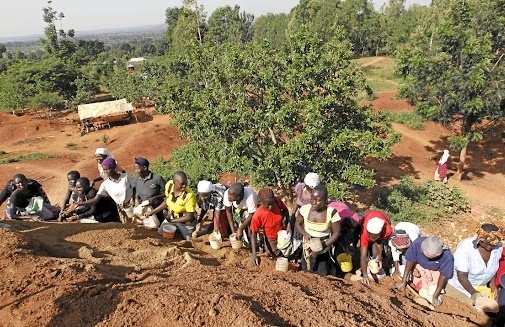Malawi expects to earn over $500-million a year from four recently launched and planned mining projects, the country’s Geological Surveys Department (GSD) says.
The projects include the Kanyika multi-commodity project, in the northern region, which is being undertaken by Australian resources group Globe Metals & Mining; the Kayelekera uranium project, also in the north, which is owned by another Australian group, Paladin; the Kangankunde rare earth project, in Balaka, in the south; and the Mulanje bauxite project, also in the south.
GSD director Leonard Kali ndekafe says his department’s assessment of the Kanyika project indicates that the project, which will produce niobium, tantalum, uranium and zircon, will contribute $50-million in taxes and other benefits once it starts production.
Globe is currently carrying out a bankable feasibility study into the project in readiness for the start of mining in 2011.
Kalindekafe says Paladin’s Kayelekera uranium mine, which was officially launched by President Bingu wa Mutharika, will contribute $50-million annually to Malawi foreign exchange earnings during its 11- to 15-year life-of-mine.
On the Kangankunde project, Kalindekafe explains that his department estimates that the project will be capable of earning the country over $50-million annually.
“It has been proposed that the processing plant for this project be located adjacent to the nearby Liwonde township, meaning that Malawians will benefit from this project in the form of employment.”
However, work on the Kanga-nkunde deposit has stalled owing to a legal wrangle over ownership of the project.
Local consortium Rare Earths has been granted the licence to implement the project, but the former owner, South Africa’s Rift Valley Resources, has dragged the Malawi government to court, arguing that it did not follow the correct procedures in nullifying its licence.
Kalindekafe says the Malawi government is try to ensure that the wrangle is sorted out amicably so that mine construction continues.
“Kangankunde is a world class resource both in terms of size and low thorium content. Government, therefore, wants to see work on the mine start soon,” he says.
The deposit is estimated to host about 11-million tons of ore.
Studies have indicated that, at a production rate of 5 000 t of rare earth ore a year, mining will be undertaken for close to 50 years.
On the Mulanje bauxite project, Kalindekafe says the project has enormous potential and is expected to contribute $350-million in foreign exchange earnings a year during its 25-year operating life.
Kalindekafe says studies have indicated that the project boasts probable mineable reserves amounting to 25,6-million tons.
A South African company, Gondo Resources, holds an exclusive prospecting licence for the bauxite deposit, and has reportedly teamed up with Chinese and other South African firms to launch a feasibility study into the project before the end of the year.
“It should be noted that, when fully operational, in addition to generating foreign exchange for the country, these projects will also lead to the construction of new roads and other infra- structure, including clinics and schools.
“They will also provide employment and stimulate other sectors of the economy, including the services sector,” says Kalindekafe.




